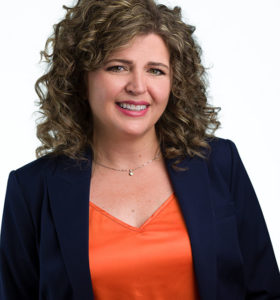 For most young parents, the words learning disability, Autism, Dyslexia, or ADHD evoke fear and prompt confusion. I was that parent. I will never forget having my son evaluated for a speech delay only to discover he likely had Childhood Apraxia of Speech. Childhood Apraxia of Speech or C.A.S. is a highly complex term used to describe a speech condition that affects the motor planning portion of the brain that impacts speech. The first opportunity I had to research the disorder, I was on it, and was devastated to learn that my child might never say his name. I ended up calling a neighboring Speech Language Pathologist in tears, who kindly arrived at my door with chocolate and offered me a precious list of local resources.
For most young parents, the words learning disability, Autism, Dyslexia, or ADHD evoke fear and prompt confusion. I was that parent. I will never forget having my son evaluated for a speech delay only to discover he likely had Childhood Apraxia of Speech. Childhood Apraxia of Speech or C.A.S. is a highly complex term used to describe a speech condition that affects the motor planning portion of the brain that impacts speech. The first opportunity I had to research the disorder, I was on it, and was devastated to learn that my child might never say his name. I ended up calling a neighboring Speech Language Pathologist in tears, who kindly arrived at my door with chocolate and offered me a precious list of local resources.
I once believed that this day marked the first day of my intentional journey as a Neurodiversity Advocate and Mother Warrior. However, as I reflect now, eleven years later, I realize that that journey began two years prior when my son started to walk and move, navigating his environment oddly or differently, and I began searching for why. That question entered the room almost daily after my son’s first birthday. The “Why?” surfaced when he had no words at 2, “Why?”. The “Why?” turned up every time he ran away from me in public places to hide. The “Why?” begged an answer when he threw things at strangers from the shopping cart. The “Why?” was terrifying because it opened the door to so many other scary questions. It turns out, “Why?” was more than just a question; it was an invitation to the most powerful, transformational, and enlightening journey of my life. My journey as a Neurodiversity Advocate and Mother Warrior began when I found the courage to invite “Why?” into the room.
Searching is not the first step of the Neurodiversity journey. Engaging with the awful, scary “Why?” is step one. You don’t have to like Why, but paying attention when he shows up is essential. He might not show up until Preschool or Kindergarten, but that is very rare. Why often appears beside unordinary or exceptional behaviors that begin to surface when a child is 6-24 months old. I never much liked Why, until I understood his softer side: Awareness. Awareness is not as scary as Why because Awareness is not a momentarily, unresolvable question. Awareness is an action, and when Why appears, replacing the unresolvable question with action is the most healthy step forward. No parent in the world can correctly answer to the awful Why, but every parent can embrace Awareness. I know now that the moment I replaced the fear of Why with the power of Awareness, I embarked on the most incredible journey of my life.

Inviting Awareness into your home daily is step 2, and this step requires Bravery. Bravery is already a friend in your home if you have a child. The act of childrearing demands a little Bravery right upfront. Neurodiversity Awareness involves invitation; you control whether or not you invite Awareness into your everyday. After hundreds of conversations with others on this journey, I have yet to meet anyone who regrets inviting Awareness and Bravery on the Neurodiversity journey. Both are true and faithful friends who help at almost every turn in the road. These two help guide the journey avoiding pitfalls, and most importantly, empowering us. Unfortunately, all too often, Avoidance pushes Awareness away at the doorstep. I imagine Avoidance as an alluring friend with a bottle of wine who encourages you to run from all of life’s trouble. Avoidance is satiating, addictive, and silently destructive. Avoidance is a thief who steals your time, effectiveness, and power. So, my friend, call on Bravery to kick Avoidance to the curb. Awareness and Bravery are valuable friends who will never let you down.
Step 3 includes another pair of playful friends, Curiosity and Celebration. These two are fun-loving, light-hearted, and easy-going. Curiosity is the bright-eyed child who sees wonder in everything. Celebration is the cool auntie who relishes in your every achievement and loves to spoil you. Curiosity and Celebration go to all the same parties, every milestone event, and are essential to your journey. I have learned that Curiosity almost always invites Celebration. I can remember when I first invited Curiosity into my son’s playroom Celebration was quick to follow. It was the witching hour, the time of the day after naps and before bedtime, and the day had been tough. My son was crying and agitated, and I had no idea why. He was two and had no words. I sat down beside him in silence and curiously stared at him, wondering what was going on in his beautiful mind, and he almost immediately calmed down and stared back at me. Then he smiled at me, and we began laughing as Celebration entered the room. I remember thinking we didn’t need words for wonder and fun. Ten years later, long after the words came, I asked him what he loved most about me, and he replied, “You are the most curious person I know; you want to know everything about me.”.
 Awareness, Bravery, Curiosity, and Celebration can take on many forms. Awareness can look like a teacher who strives to discover the strength in every student. Bravery can look like a friend who stands up to the class bully. Curiosity can look like a neighbor who observes the mother struggling next door and offers to take her kids to school a few days a week. Celebration can look like a friend who comes over with chocolate, a precious gift, and encouraging words after a tough day. Everyone can participate in the Neurodiversity journey. Every Neurodiverse individual needs an advocate, every advocate needs a supportive friend, and quite honestly, we all need Awareness, Bravery, Curiosity, and Celebration to show up at our doorstep. So. no matter what you have to offer, join us on the Neurodiversity journey; I can assure you this path leads to a brighter future for everyone.
Awareness, Bravery, Curiosity, and Celebration can take on many forms. Awareness can look like a teacher who strives to discover the strength in every student. Bravery can look like a friend who stands up to the class bully. Curiosity can look like a neighbor who observes the mother struggling next door and offers to take her kids to school a few days a week. Celebration can look like a friend who comes over with chocolate, a precious gift, and encouraging words after a tough day. Everyone can participate in the Neurodiversity journey. Every Neurodiverse individual needs an advocate, every advocate needs a supportive friend, and quite honestly, we all need Awareness, Bravery, Curiosity, and Celebration to show up at our doorstep. So. no matter what you have to offer, join us on the Neurodiversity journey; I can assure you this path leads to a brighter future for everyone.
